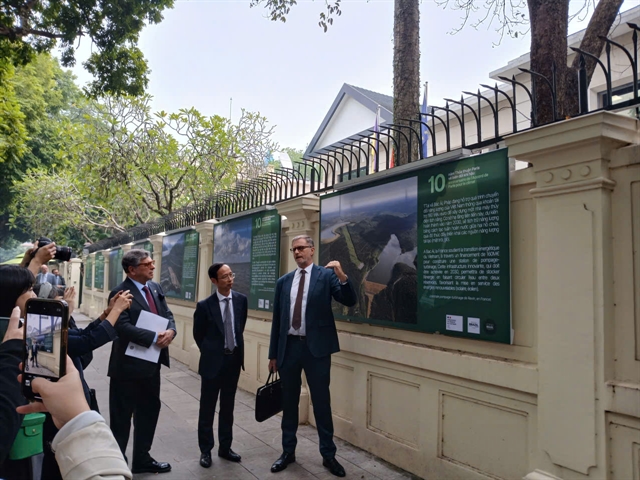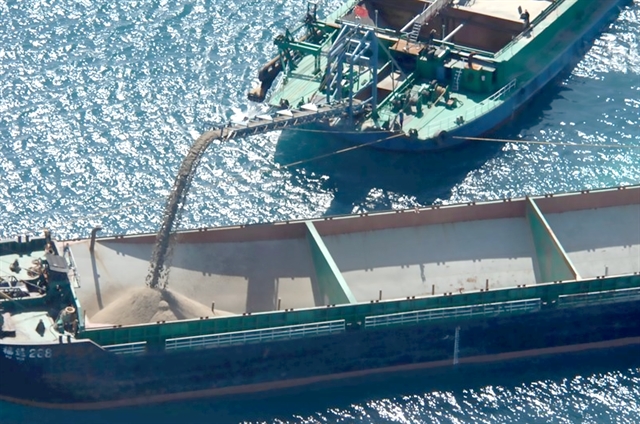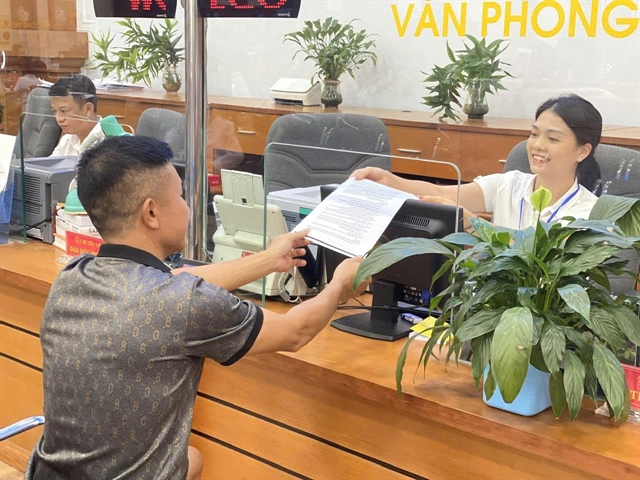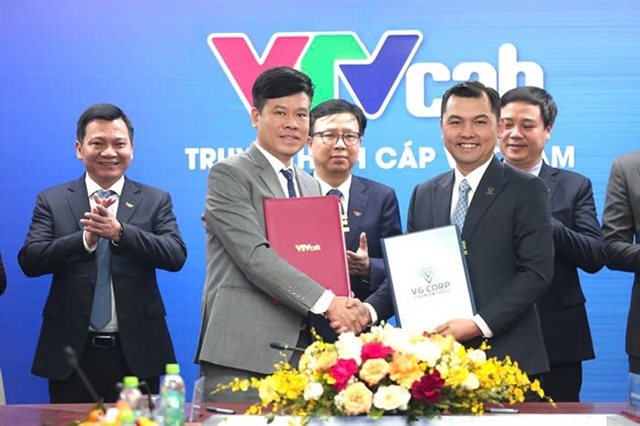 Environment
Environment

 |
| Exploiting sea sand in the Cửu Long Delta region. — Photo baoxaydung.com.vn |
HÀ NỘI — The use of sea sand for road levelling is a growing trend in the context of dwindling river sand while construction demands in the country skyrocket.
Faced with this fact, the General Department of Geological and Minerals of Việt Nam is urgently carrying out work related to assessing sea sand exploitation for levelling highways, transport and urban infrastructure projects in the Cửu Long (Mekong) Delta in southern Việt Nam.
Unlike the mainland, the sea of the Mekong Delta is rich in natural resources, especially minerals for construction.
The results of marine mineral geological surveys over the past 25 years have achieved many important results for planning socio-economic development.
In particular, in the sea off the coast of Sóc Trăng Province, the geologists have identified many potential and promising areas of minerals that can be used as construction materials but have not been effectively exploited.
Therefore, studying the use of sea sand to gradually replace river sand in construction is an urgent solution as the reserves of river sand run out.
In the Cửu Long Delta region, the demand is high for construction materials for transport infrastructure works and projects for sea reclamation, sea dykes and impact of rising sea levels.
According to the Federation of Marine Geology and Minerals, if deployed, the project will also promptly meet the demand for materials for highway projects in the delta region as well as building transport infrastructure works and urban areas connecting regions, seaports, border gates and industrial zones.
As one of the key projects with specific factors, the project has received great attention from the Ministry of Natural Resources and Environment (MONRE).
In a recent meeting, deputy minister Trần Quý Kiên asked the General Department of Geological and Minerals of Việt Nam and the Federation of Marine Geology and Minerals to study and assess the potential impact on the marine environment when exploiting sea sand.
Nguyễn Tiến Thành, head of the federation, said that the project's activities would have certain impacts on the environment, but not adversely affect the environment.
According to Thành the main activities of the project are geophysical, geological and basic environmental investigations at sea so they do not directly affect the seabed and have a small amount of discharge into the environment.
Seabed sampling and drilling directly affects the seabed but only removing a small amount of material does not greatly affect the topography of the seabed.
By using drilling fluid and sampling the seabed, only a very small amount of non-toxic clay and mud is emitted into the environment and it is unlikely to pollute the water environment.
In addition, the activities of ships carrying out geological and geophysical surveys and marine drilling have emitted a small amount of oil and grease into the environment.
Activities of taking, gathering and transporting samples on land and at sea are not likely to cause environmental pollution. The samples are sent to geological laboratories for processing and analysing.
Besides that, there is no phenomenon of land appropriation or use, so it does not directly affect the life of people, Thành said.
According to Nguyễn Thạc Cường, deputy head of the MONRE's Sciences and Technologies Department, at present and in the future, the demand for levelling materials and construction sand in the Cửu Long is very high.
Meanwhile, the supply is currently very short, leading to many consequences that can slow down the socio-economic development of this area.
Therefore, this project should be implemented soon to contribute to solving immediate and long-term problems for the development of transport infrastructure in particular and the construction and development of the region in general.
However, there is a need for co-ordination of relevant agencies from central to local levels to enable the implementation of the project.
It is also necessary to soon issue legal regulations on the investigation, assessment and exploration of sea sand and an environmental impact assessment of sea sand mining and dumping, Cường said.
Nguyễn Phương, a lecturer at the University of Mining and Geology, estimated that the demand for sand for levelling of highways in the region would be about 36 million cu.m in the period of 2021-2025 while river sand would just meet a small portion of this need, let alone other construction.
In the period of 2021-2025, the Southeast and the Cửu Long Delta regions would focus on building traffic works, seaports, airports, roads connecting seaports and airports, reservoirs and coastal erosion prevention works that would need a huge amount of construction sand.
So, the project of assessment and use of sea sand was a reasonable solution and had high feasibility, Phương said. — VNS




